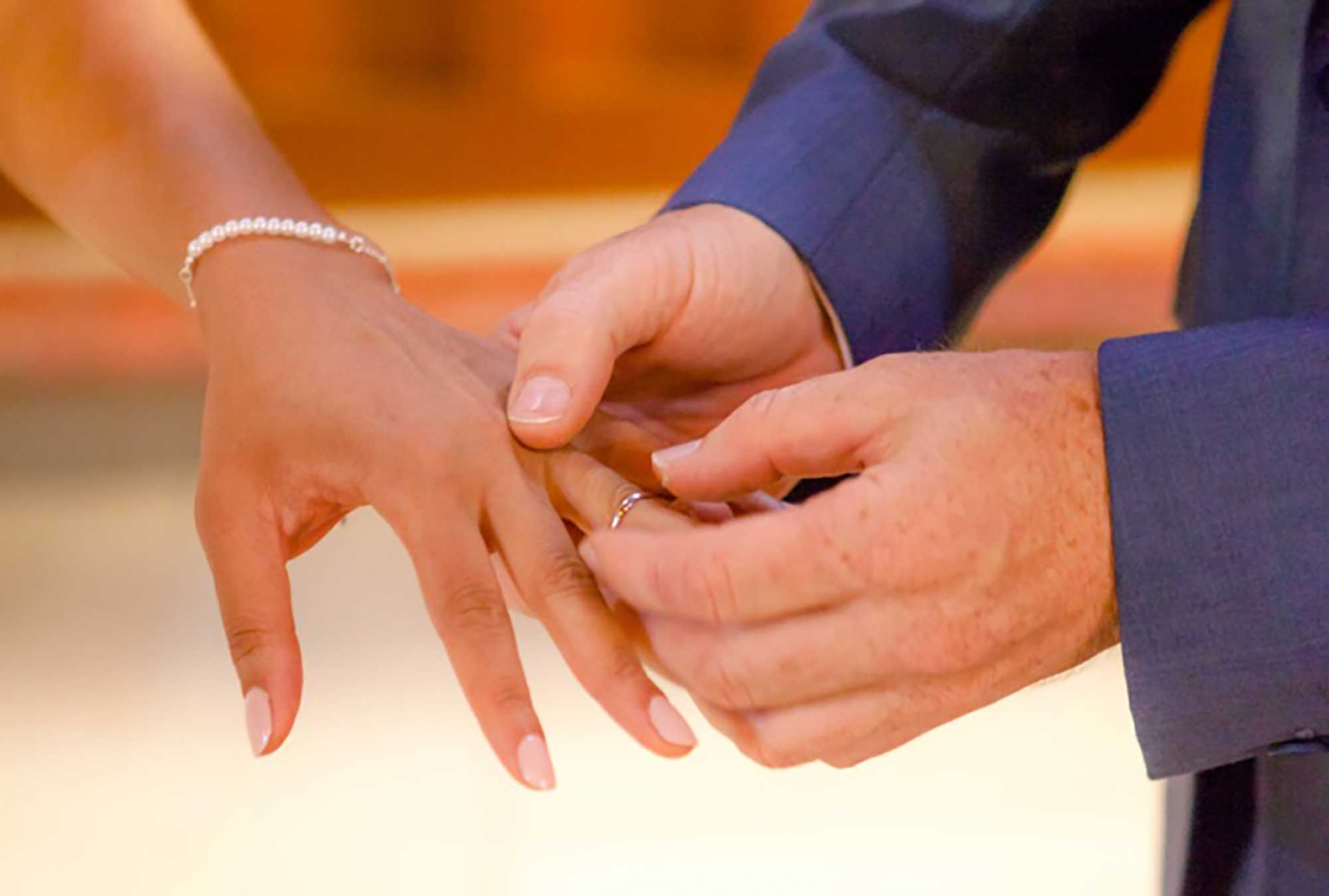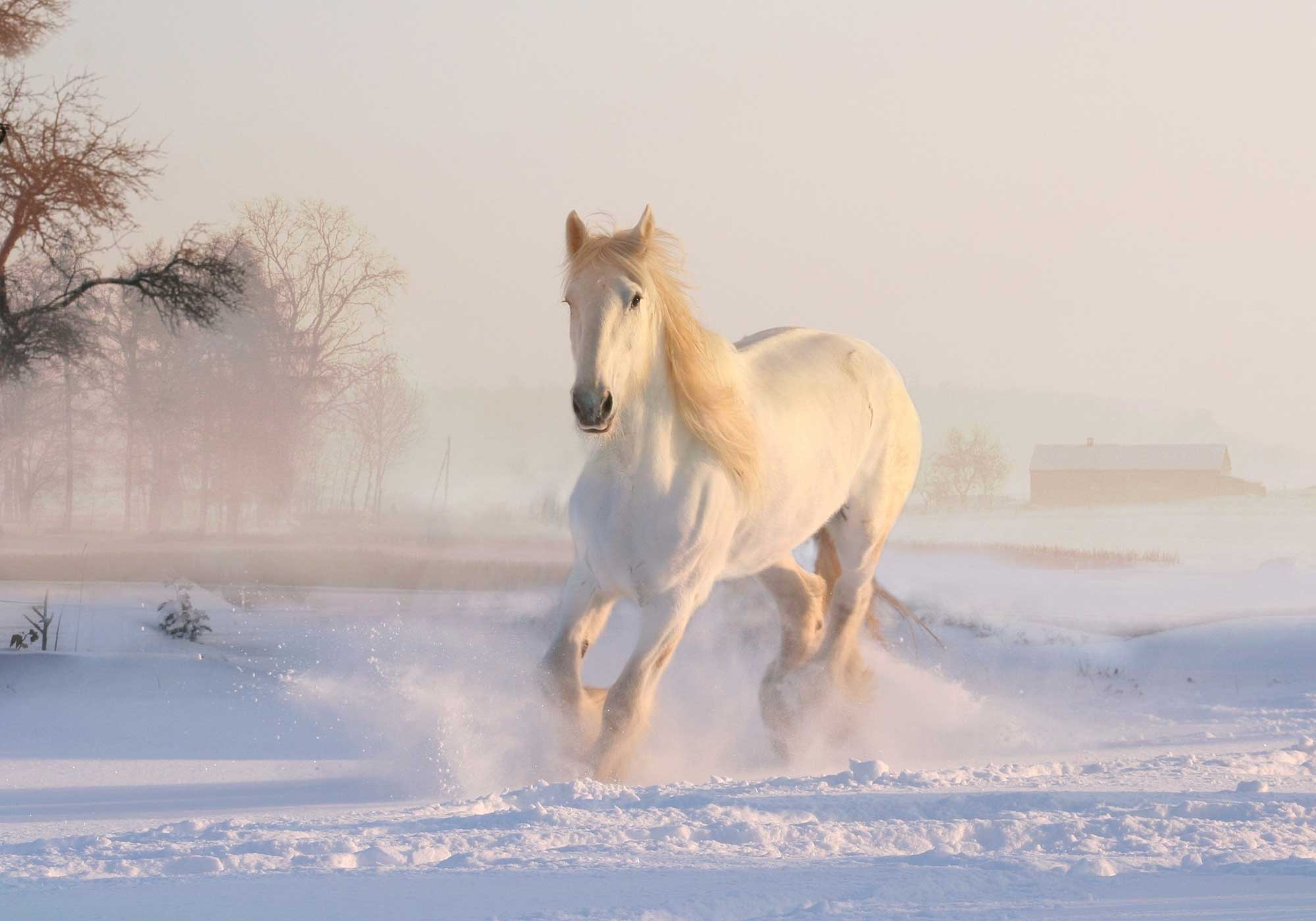
Revelation Hope – The Fall of Babylon
and the Marriage Supper of the Lamb
The Fall of Babylon
Revelation 18
There are five parts to Revelation 18:
1. The situation of Babylon just before its destruction, where the doom has been pronounced but not executed (verses 1-3).
2. A sentence on Babylon that describes the results of a heavenly investigation predicting the consequences, which includes an appeal to exit before Babylon’s fall (verses 4-8).
3. The execution of Babylon’s doom, which
includes the phrase “in one hour” three times—like the tolling of a bell—and three groups mourning her fall (verses 9-19).
4. The people of God celebrate the fall of Babylon (verse 20).
5. The doom, fall and execution recounted and celebrated (verses 21-24).
The Angel Proclaims the Fall of Babylon
Read Revelation 18:1-3
This chapter begins with another proclamation angel, as in Revelation 14:6-12 and Revelation 10:1-7.
The angel comes from heaven and, with great authority, addresses the whole world on God’s behalf.
The illumination covers the whole earth and is the last opportunity for those who dwell on the earth to accept God’s message.
This is the last description of the great final message of God—the last positive message to God’s people and the last negative message to the world.
At this time, the people of God are still found in Babylon. But the “fall of Babylon” is due to her being home to unclean demons and birds (see Revelation 18:2).
The declaration is a gospel proclamation and is about its spiritual condition (see Revelation 14:8).
The state of Babylon is a total reversal of its original condition and startling for an organisation that claims to be on God’s side!
There is a strong spiritualistic component to Babylon—but the power is from the frogs working deceptive miracles (see Revelation 16:1-14).
The adultery is because of her present unity with the powers of the world (see Revelation 18:3).
In Revelation 17, the emphasis has been on the religious-political union. It now includes the economy, as hinted earlier in the boycott against those who don’t have the mark of the beast (see Revelation 13:16, 17).
Revelation 18 describes the religious, political and economic motivation for unity. The merchants of the earth have become wealthy by being involved with Babylon.
The last opportunity for those who dwell on the earth to accept God’s message.

The Big Picture
Revelation 11:18 outlines the second half of the book in these stages:
“The nations were angry” describes the enforcement of worship by the combination of religious and secular powers uniting together in Revelation 13. Revelation 17 gives us more details on how this unity comes about. Religious powers—symbolised by a woman called Babylon—will get the support of secular power—symbolised by the waters of the river Euphrates, the seven heads or kings, or the 10 horns.
“The wrath of God” is God’s response to the anger of the nations at the end of earth’s history. Seven plagues are poured out. The result of God’s wrath is the fall of Babylon, described in detail in Revelation 18. John probes the fall of Babylon three times, each time giving us different perspectives and symbolism.

A call to leave Babylon
Read Revelation 18:4-8
“Then I heard another voice from heaven say: ‘Come out of her, my people, so that you will not share in her sins, so that you will not receive any of her plagues’” (verse 4).
The voice speaks pointedly to God’s people still living in Babylon.
They are not to sit on the fence but to take a decisive stand on the side of truth and of God.
This is the final and complete gathering of the confederacy of God’s true people.
In the Old Testament, Lot became attached to Sodom even though he was a believer in the true God.
When the time came for Sodom to be destroyed, it was imperative for Lot to leave and not linger, so as to avoid being identified with the city to be destroyed.
In Revelation, anyone who lingers in end-time Babylon will end up with the anti-God confederacy.
Their hearts may not be in the deception but they fear loss of status or economic benefits.
The great end-time judgment of the world is before the second advent of Jesus.
The crimes of Babylon are uncountable and the sentence is given (see Revelation 18:5).
The charges proven against her and the pronouncement of doom resulting from the pre-advent judgment is given before her physical fall.
The justice described in Revelation 18:6 seems to be based on the law of malicious witness, as found in Old Testament Israel (see Deuteronomy 19:16-19).
The penalty for perjury is to receive the punishment the guilty party would have received.
In Revelation, Babylon has accused God’s people in the earthly courts and will now receive judgment in a higher court according to her behaviour in the earthly courts.
It is not revenge but justice, legal and calculated.
Babylon will be paid back double for double crimes, meaning that her punishment will be full and final (see Jeremiah 16:18, 17:18).
Babylon’s glory and luxury came at the expense of others, and is the basis for condemnation and punishment (see Revelation 18:7).
To boast when the activities are criminal is defiant against the God of judgment.
The challenge is for God to take away the fruits of the crimes.
The description in Revelation 18:7 echoes Isaiah’s description of Babylon’s fall in Isaiah 47:7-9.
Babylon has an unquestioning faith in her own resources—and a corresponding lack of faith in God.
Revelation 17 and 18 give the background leading up to the falling of the plagues.
Because God has judged her, her plagues will come. The execution of judgment is still ahead.

Lamenting the Fall of Babylon
Read Revelation 18:9-19
There are three litanies of lament about the destruction of Babylon that begin with “Woe” and end with sentences that begin with “in one hour.”
• The political rulers of the world caused Babylon’s destruction (see Revelation 17:16), yet they mourn over it (see Revelation 18:9, 10).
It was done in a fit of rage but later, the resulting loss of power and wealth becomes apparent.
Actions taken in anger, lust and drunkenness have short-lived value and are soon regretted.
• The merchants of the world were actively involved in and were profiting from trade with the prostitute.
Many cargoes were traded and they mourn the tremendous economic loss (see Revelation 18:11-16).
• Poetic completion calls for a third group: the sea captains who transport the goods for the Worldwide economic depression is the result of Babylon’s fall.
The plaintive cry is: “Was there ever a city like this city?” (Revelation 18:18).merchants. Babylon’s wealth was the engine of their wealth (see Revelation 18:17-19).
Babylon was treated like God and Christ, yet fails the kings, merchants and sea captains of the world who regret her fall. Those who identify with Babylon in any way perish with her (see Revelation 18:4).
Many—like the kings, merchants and sailors of this chapter—are not committed to Babylon’s agenda in their hearts. They cooperate with her to better their lives on earth.
Rejoicing in Justice
But there is a fourth group. While some bewail her fall, others rejoice: “Rejoice over her, O heaven! Rejoice, saints and apostles and prophets! God has judged her for the way she treated you” (Revelation 18:20).
Babylon had delivered unfair and unjust verdicts, jailing those who were unjustly accused.
Those injustices are now reversed. It is appropriate to rejoice when an oppressor loses power.
All earthly tribunals including the highest courts of any nation—can be appealed to the higher court of God’s end-time judgment.
Justice is coming, even if we find ourselves in a condition where nothing is right. God will set right everything that has been wrong.
The Finality of the Fall Recounted and Celebrated
Read Revelation 18:21-24
“Then a mighty angel picked up a boulder the size of a large millstone and threw it into the sea, and said: ‘With such violence the great city of Babylon will be thrown down, never to be found again’” (Revelation 18:21).
The Old Testament background comes from Jeremiah 51:59-64. But in Revelation, the fall of Babylon is the final fall and it will never be found again.
The fall is total and complete: no more music, workmanship, food production, lamps or marriage (see Revelation 18:2-22).
It is important to remember that sin will not last forever.
In Revelation, God deals with sin fully and finally. It will not rise again.
The “how long” cry of God’s people from under the altar in the fifth seal (see Revelation 6:9-11) has been answered, in the fall of Babylon.

“The Invitation to Two Suppers”
Revelation 19
Revelation 19 draws together many themes from various parts of the Book of Revelation and recapitulation is a consistent tool.
Verses 1-10 are an interlude before we continue with Armageddon and bring it to completion in verses 11-21.
Here we have the appearance of Christ as a warrior king, to fight on behalf of His people and destroy those left alive after the plagues and internal fighting in the coalition.
In Revelation 19, there are two suppers:
1. The wedding supper of the Lamb. This is the reward for those who have faithfully followed the Lamb.
2. An invitation is given to the birds of prey to feast on the flesh of the wicked after the battle of Armageddon.
We see the followers of Jesus portrayed in different imagery:
• First, they are a bride (see Revelation 19:7);
• Then, guests at the wedding (see Revelation 19:9);
• Then they are an army (see Revelation 19:14). Notice this army is clothed in fine linen, white and clean which is the same dress as the bride (verses 7, 8).
This same scene is described in Revelation 17:14, which states (as does Revelation 19:16) that the one who wins the battle is “King of kings and Lord of lords” and His faithful followers are with Him in the battle, now described as riding on white horses.
Revelation 19:1-5 describes the emotions— and celebrations—of the righteous as they see the enemy’s destruction.
The word “Hallelujah” used in these verses is a compound Hebrew word of Halal (to praise) and Yah (Yahweh). It was a word adopted by early Christians and became a common expression for giving praise to God.
The language is from the throne room scene of Revelation 4.
The great multitude is probably the same as those pictured in Revelation 7:9-17. This great multitude consists of those people who stand for God on the day of the Lord and survive the great tribulation.
In Revelation 19:6-10, the description of the righteous changes focus, portraying them as the bride of Christ and giving an invitation to the wedding supper.
Again, a great multitude rejoices.
“An Army Dressed in White”

Marriage made in heaven
This magnificent moment in history—Christ and His church uniting in marriage—is described in the language of a Hebrew wedding:
• It begins with a betrothal/engagement, which takes place on the estate of the bride’s father.
The prospective groom and his father come to the house of the bride and her father for an engagement ceremony. There is a dowry to be paid for the bride.
• The groom returns to his father’s house and prepares a place to live—usually on the father’s property—where he and his bride will live and farm.
• The bride stays at her father’s house to prepare herself to be a fit and honourable bride. Their only contact during this time is through a mediator.
• The groom collects his bride at her father’s house and takes her to his father’s house, where the wedding feast takes place.
In the same way, Jesus left His Father’s house in heaven to come to earth and be engaged to His bride, the church.
He paid the dowry with His own life. He returned to heaven to prepare a place for His bride (see John 14:1-3) while she remained on the earth, preparing herself.
Meanwhile, their only point of contact is through a mediator—the Holy Spirit.
At the end of earth’s history, Jesus leaves His heavenly home to come to earth for His bride and takes her back to His Father’s house, where He has prepared a place.
When the place and the bride are both ready, the wedding takes place.
The bride has made herself ready in harmony with the Hebrew wedding and is the focus of the passage.
When the place and the bride are both ready, the wedding takes place.

The Bridal Gown
The bride is dressed in the righteousness of Christ and the corresponding righteous acts that she has done:
“Fine linen, bright and clean, was given her to wear.”
Fine linen stands for the righteous acts of God’s people (see Revelation 19:8).
This clothing is distinguished from Babylon’s by being bright and clean.
And there seems to be a language connection between the dress of the bride and the qualities of the New Jerusalem.
The bride of Jesus and the New Jerusalem are mentioned as the same entity when God’s people are living in it.
“Righteous acts” is a special term (see Revelation 15:4). It is not the forensic, legal, righteousness noted by Paul in Romans 5:18.
In the Old Testament, a righteous act is one that functions in harmony with the covenant. They are correct according to the laws of God or society.
In Romans, Christ did what was right. His righteous acts can be imputed to His people so His people, are accounted legally as Christ.
There is an intimate connection between God’s faithfulness and that of His people. The imputed righteousness of Christ would be that which is placed on them but the wedding garment is the righteous actions they have done.

“Fine linen, bright and clean, was given her to wear.”

“The lives we live make us ready only as they reflect the outworking of the gospel.”
Jesus’ faith becomes the faith of His people, leading them into obedience.
They may be able to do things without God’s help but His people are to be so immersed in Christ that their actions imitate those of Jesus.
The fine linen was given her to wear. The bride of the Lamb at the end of history wears “the righteous actions of the saints” like a garment.
While visible on the outside, they represent something deeper and even more important—character. The outward actions arise from within.
Success will prove to be more a matter of character than skill or luck.
These righteous acts of the church are an important part of Armageddon, so much
so that God’s true people are pictured as accompanying Christ when he rides out to fight the battle of Armageddon.
They are also pictured with the Lamb in Revelation 17:14 as He fights this battle.
They are not saved by their righteous acts but they are part of the weaponry used by God to overcome Satan (see Revelation 12:11).
The faithful obedience given to the laws of the covenant under duress is a way of showing the devil to be wrong in his accusations of God and His people.
The lives we live make us ready only as they reflect the outworking of the gospel. God’s people keep His commandments—not to earn salvation but resulting from the salvation they have already received in Jesus.
Jesus’ faith becomes the faith of His people, leading them into obedience..

Bride’s Invitation to the Wedding Supper
Is the bride of the Lamb invited to the wedding supper as the bride or just to attend? (See Revelation 19:9.)
This seems to us to be a puzzling invitation. We do not normally invite a bride to attend her own wedding supper.
John’s purpose is to describe the experience of God’s righteous people from a variety of perspectives: as the bride and as the guests.
We must not press logic too far when dealing with figurative language. As we have seen, John frequently mixes his metaphors and symbols.
The wedding has not come yet—it is only announced in Revelation 19:9.
We must wait until Revelation 21, when the bridegroom is united with His bride.

We must wait until Revelation 21, when the bridegroom is united with His bride.

Prophetic Gift
In Revelation 19:10, the testimony of Jesus is again mentioned (see Revelation 12:17) as the spirit of prophecy.
We saw earlier how the testimony of Jesus is the prophetic gift explained in Revelation 1:1, when John as showing the things that must soon take place.
This expression is talking of the gift of prophecy, in which God gives selected individuals revelatory insights not normally available to ordinary people.
This gift is a witness to Jesus, for that is what true prophets are called to do.
The Testimony Of Jesus is the spirit of prophecy .

The Rider on a White Horse
Revelation 19:11-16 describes the armies of heaven coming to rescue the righteous and finish the destruction of the wicked.
In his vision, John went up through the gates into heaven (see Revelation 4:1). Jesus now comes down to earth through the same gates to conquer, as He did in the first seal (see Revelation 6:2).
He is “faithful and true” (see Revelation 3:14) and Jesus’ eyes are like blazing fire (see Revelation 1:14).
This is a war involving justice and the execution of the covenant. It is fair because the earth is full of bloodshed and oppression. He is carrying out what the law requires, rather than as a conquering military commander.
It also marks a progression in the career of Jesus.
The crowns in Revelation 19:12 are diadems—royal crowns—as compared with the Stephanos—Olympic victory crowns—worn by the rider of the white horse in Revelation 6:2.
Jesus’ rule was limited while here on earth. Many people refused to become citizens of His kingdom. But when he comes to rescue the righteous, He is given authority to rule unchallenged.
The dragon claims authority on earth and wears many crowns (see Revelation 12:3). But Jesus demonstrates the falsity of the claim.
Jesus’ authority over the earth was established by the cross. By His blood, He now reigns and, by its authority, He rescues the righteous. By His blood, He deals with those who shed the blood of His true followers.
Only in the writings of John is Jesus referred to as “The Word.” In the symbolism of Revelation—the called, chosen and faithful— join “The Word” in the final battle (see Revelation 17:14, 19:14).
But the focus is firmly on Jesus. The statement in verse 15 “out of His mouth comes a sharp sword” is significant.
The battle in not a battle with literal swords but with ideas.
Satan’s way is shown to be wrong in the eyes of the universe.
Jesus is now dealing with what is left from the destruction of the worldwide confederacies pictured in Revelation 17 and 18.
The winepress is an allusion to how the wicked are destroyed (see Revelation 14:19, 20).
In Revelation 19:17-21, the armies of earth gather to fight but are destroyed and their flesh is offered to the birds of prey as a feast.
It is interesting to note that we are frequently given the build-up to the final battle of
Armageddon and then given the results, but nowhere does John describe the actual fighting. It is obvious he is not depicting a literal battle of tanks and planes.

Decision Time and Final Defeat
The war is a battle for the allegiance to be given to either the Creator or Satan.
Both sides have their supporters: the Creator
has His called and chosen followers (see Revelation 17:14);
Satan has Babylon and the kings of the earth.
The final destruction is the post-war feast of the vultures.

The threatening vultures’ cry is fulfilled (see Revelation 8:13).
The complete destruction of the political confederacy is to take place at the second coming of Jesus.
We saw in the sixth seal (see Revelation 6:15-17) the kings and mighty men cry to the rocks to fall on them from fear of the Lamb’s wrath.